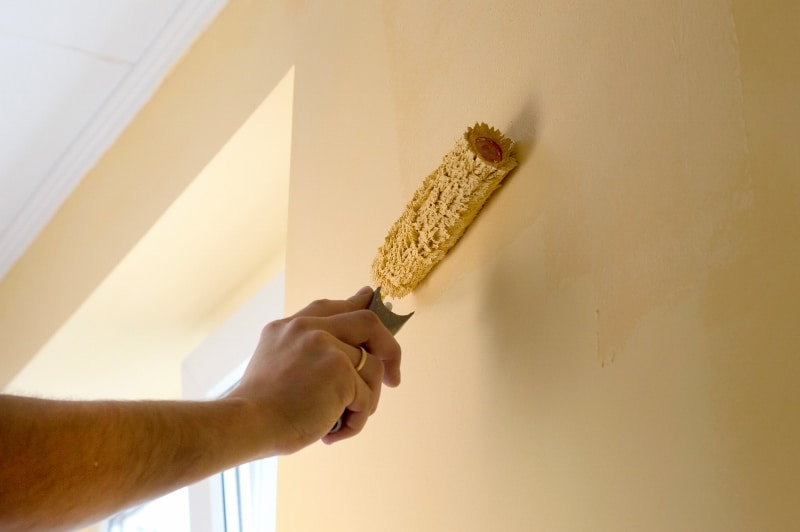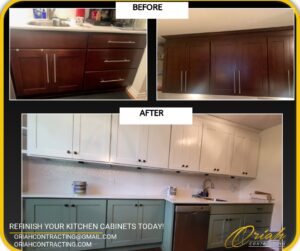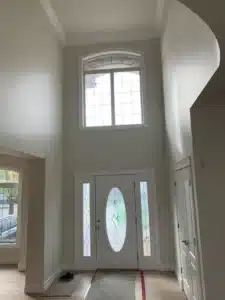This blog was submitted by Dynamic Stucco Repair and Painting in Calgary.

Painting the interior of a house can breathe new life into the space and enhance its aesthetic appeal. To achieve a professional and polished finish, it is essential to approach the task systematically. This essay presents a comprehensive guide on the proper way to paint the interior of a house, covering preparation, supplies, cutting in, rolling the walls, applying additional coats, finishing touches, and cleaning up.
Dynamic Stucco Repair and Painting, professional house painters in Calgary, shares advice on the proper way to paint a house:
Table of Contents
Toggle1. Preparation
Proper preparation sets the foundation for a successful paint job. Begin by clearing the room of furniture, decor, and fixtures, or protect them with drop cloths. Remove nails or hooks from walls and fill any holes with spackle, ensuring a smooth surface. Thoroughly clean the walls to remove dust, dirt, and grease. A mild detergent and warm water solution are effective for this task. Rinse the walls and allow them to dry completely before proceeding. Sanding walls is also a very good practice to remove dirt and film on walls and will also remove texture or imperfections. Sanding should be done between paint coats to be the most effective.
2. Gathering Supplies
Equipping yourself with the necessary supplies ensures a smooth painting process. Choose the appropriate paint type and finish for your project. Acquire high-quality brushes and rollers suitable for the paint and surface texture. Painter’s tape should be used to protect areas such as trim, baseboards, and windows. Cover the floor with drop cloths or plastic sheets to prevent paint spills and drips. Prepare a paint tray and liners for easy paint distribution and cleanup. When you hire professional painters in Calgary like Dynamic Painting, this will be completed for you.
3. Cutting-In
Before using a roller, it is important to cut in the edges and corners of the walls using an angled brush. This technique ensures clean lines and prevents overlap on adjacent surfaces. Take your time and use controlled strokes, painting around trim, doors, and windows. Use a small brush for precise areas that cannot be reached with a roller. Take care to maintain a consistent line and blend the edges for a seamless transition.
4. Rolling the Walls
Once the cutting-in is complete, use a roller to apply paint to the larger wall surfaces. Follow these steps for an even and professional finish:
· Load the roller with paint by dipping it into the paint tray and rolling back and forth to distribute the paint evenly.
· Start at the top of the wall and work your way down, painting in sections approximately 3 feet wide.
· Apply light, even pressure, on the roller and use a “W” or “M” motion to distribute the paint evenly.
· Avoid pressing too hard, as this can cause excessive paint buildup and roller marks. Reload the roller as needed to maintain a consistent application.
· Blend the sections together by slightly overlapping the edges, ensuring a seamless finish.
5. Applying Additional
In most cases, a second coat of paint is necessary for optimal coverage and a professional look. Before applying the second coat, allow the first coat to dry completely. Inspect the walls for any areas that require touch-ups or additional coverage. Repeat the cutting-in and rolling process, maintaining a wet edge and blending the paint with the previous coat. Allow each coat to dry before assessing if further coats are needed.
6. Finishing Touches
After the final coat of paint has dried, remove the painter’s tape carefully to avoid peeling off any paint. Inspect the walls for any imperfections or missed spots. Use a small brush to touch up any areas that require attention. Pay attention to details such as corners and edges. Take a step back and evaluate the overall finish, ensuring a smooth and cohesive appearance.
7. Cleaning Up
Proper cleanup is crucial for maintaining the longevity of your painting tools and ensuring a tidy space. Clean brushes and rollers immediately after use, following the manufacturer’s instructions. Remove drop cloths and plastic sheets, taking care not to drop paint on flooring surfaces or walls. If any paint is accidentally applied to floors or walls, it can be cleaned up with soap and warm water on most occasions.
Dynamic is well versed in interior and exterior painting, spray painting, and doing minor stucco, drywall, and popcorn ceiling repair. We can help you with your next painting project and provide you with a free estimate for your next project! Contact us!









